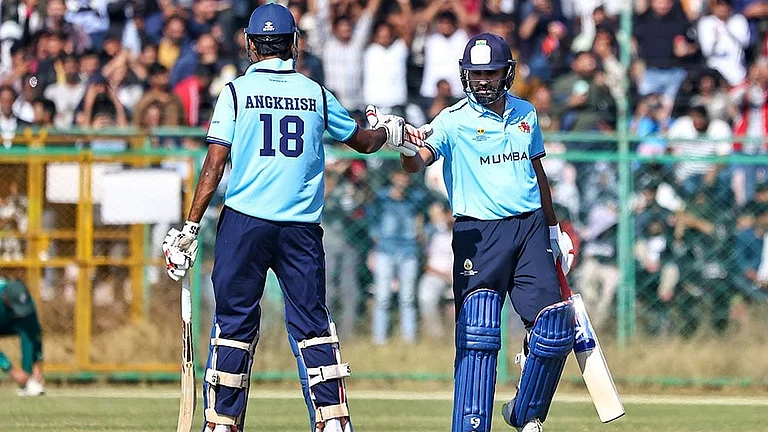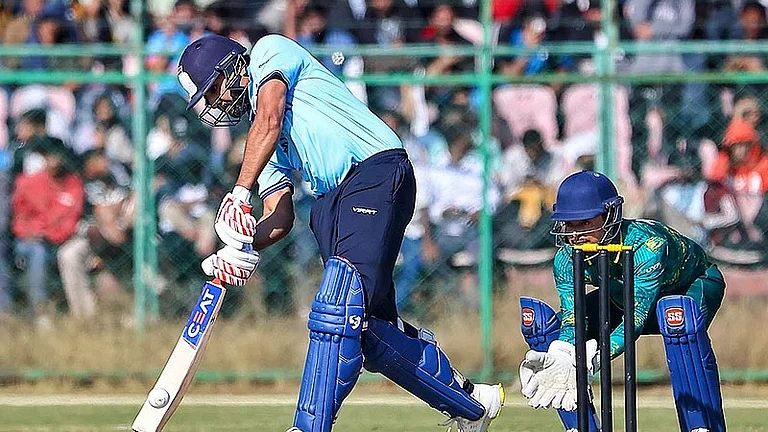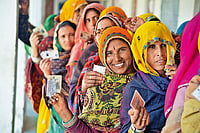IT takes England to throw up the difference between Indians and Pakistanis. Not through a divide and rule policy this time but by quoting racially objective statistics about Asian immigrants in the UK. Indians and Pakistanis migrated to the same country with similar backgrounds. Today Indians have higher per capita earnings than whites; Pakistanis and Bangladeshis are likely to be four times poorer than the whites.
The findings in a survey by Essex University last week ripped the 'Asian' label off the South Asians it covered so politely. Indians among the Asians were shown to be dramatically different from the Pakistanis and Bangladeshis whom the study described as "easily the poorest groups in the country". The study calculates England's poverty line quite simply. Take the net earnings of a family and divide it by the number of members. If that figure is less than half of the national average, the family is poor. By this definition 60 per cent of Pakistanis and Bangladeshis in Britain are 'poor', compared to about 20 per cent of the Indians. And many among the Pakistanis and Bangladeshis are in "serious poverty".
The profile of the Pakistanis and Bangladeshis is so similar as to be indivisible. The next poorest group after the Pakistanis and Bangladeshis are the black Africans at 30 per cent below the poverty line—only half of them poor on average compared to Pakistanis and Bangladeshis.
The profile of the Chinese in Britain matches that of the Indians. But with just above 100,000 Chinese and well over a million Indians in Britain, the success of the Indians in Britain is far more substantial, and a lot more visible. Among the other minorities, black Caribbeans have earnings below the Indians and Chinese, and slightly below the white population, though women earn much more than the men. Black Africans as a whole are a lot poorer than black Caribbeans, though not nearly as poor as the Pakistanis and Bangladeshis.
Pakistanis and Bangladeshis were found to be hit by almost every factor that counts in poverty—"high unemployment among men; low levels of economic activity among women; low pay; and large family sizes." On the other hand, the study found that "Indian and Chinese people have high levels of employment".
The study was based on two surveys—a sample of 3,315 minority households and a comparison group of 2,867 white households, and data from the social services that covered 2,520 households from minority groups and 50,000 white households. A disturbing finding was that Bangladeshi and Pakistani working families have "only a little more income than they would have received if they had been out of work". Which means most Pakistanis and Bangladeshis live off the state, and it makes little difference to their income whether they work or not.
Of course, none of this has come as a surprise to South Asians. "Unfortunately too many of these unemployed people are quite proud of this," a Pakistani councillor from East London told Outlook. "I hear people telling me quite happily that they live like malika ke mehmaan (her majesty's guests)." Large families bring in greater state support; her majesty's government is committed to paying generously for every child of the unemployed or underpaid, and providing large families with proportionately large houses to live in. Political groups have been voicing increasing opposition at seeing the hard-earned money of the British going as hardly earned dole.
Inevitably the report raises the question why Indians and the Chinese are so different from the Pakistanis and the Bangladeshis. One possibility the report suggests is external market factors "such as the collapse of the textile industry in which so many Pakistanis had been employed". This textile industry was wiped out by imports coincidentally perhaps from India and China. Pakistanis and Bangladeshis have been pushed down by Indians and Chinese in Britain, and backing them, by Indians and Chinese from India and China. But the textile industry hardly explains the gaping differences, and the report points to more fundamental reasons.
"Lack of appropriate education and training provides part, but only part, of the explanation," the report says. "Islamic traditions are relevant to the low rates of female economic activity and large family sizes in these groups." But beyond this the report only has questions. "Can variations in income be explained in terms of the different characteristics of the minority groups, some of whom have arrived in Britain quite recently?" What are these characteristics? The real inquiry might have to begin where this one dropped off.

























